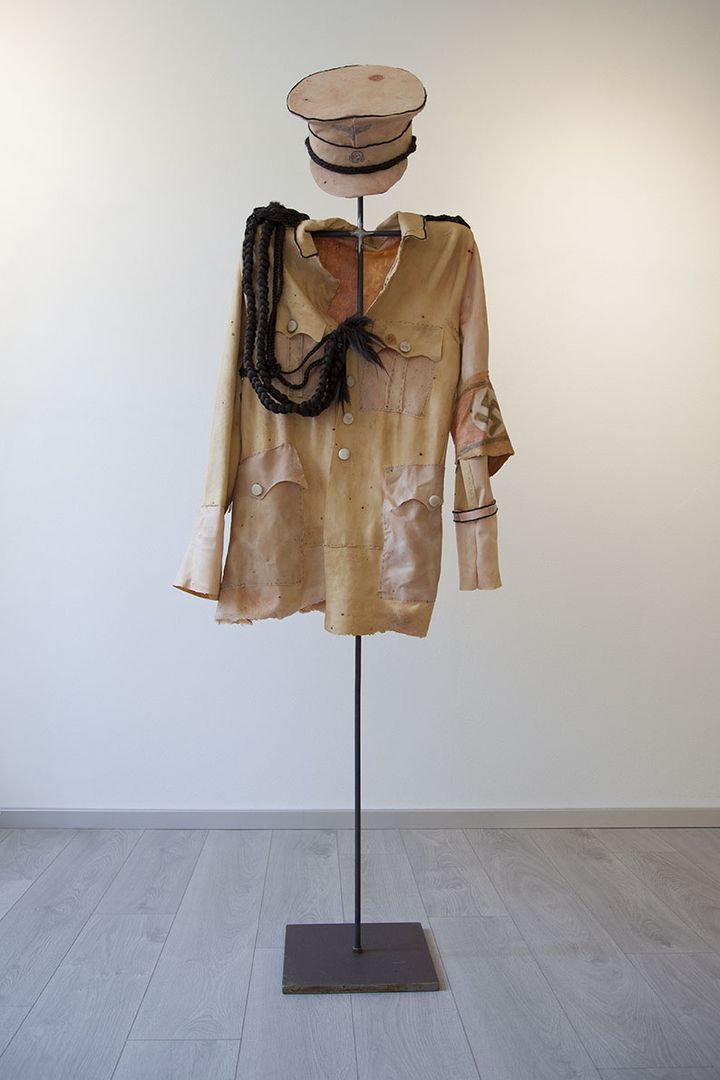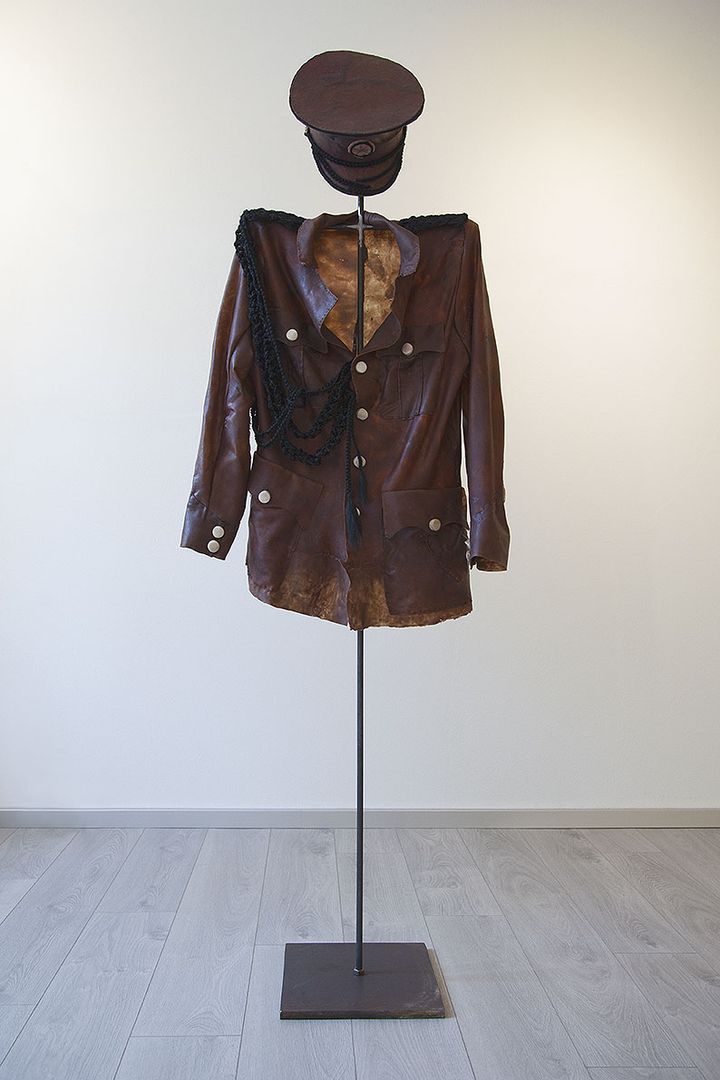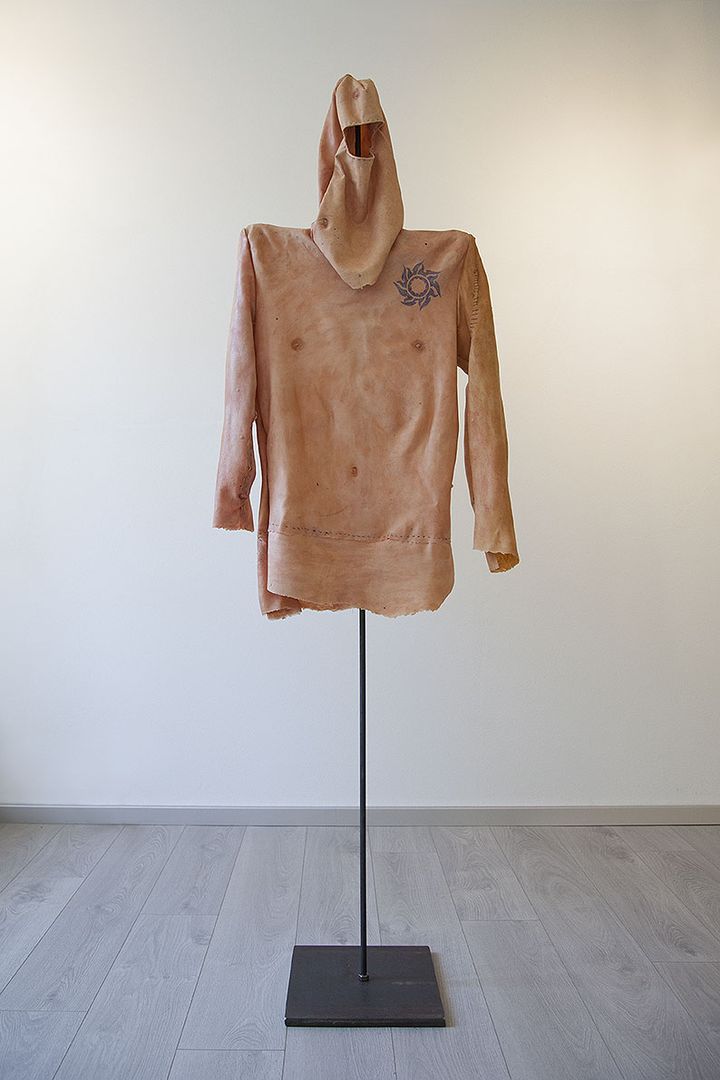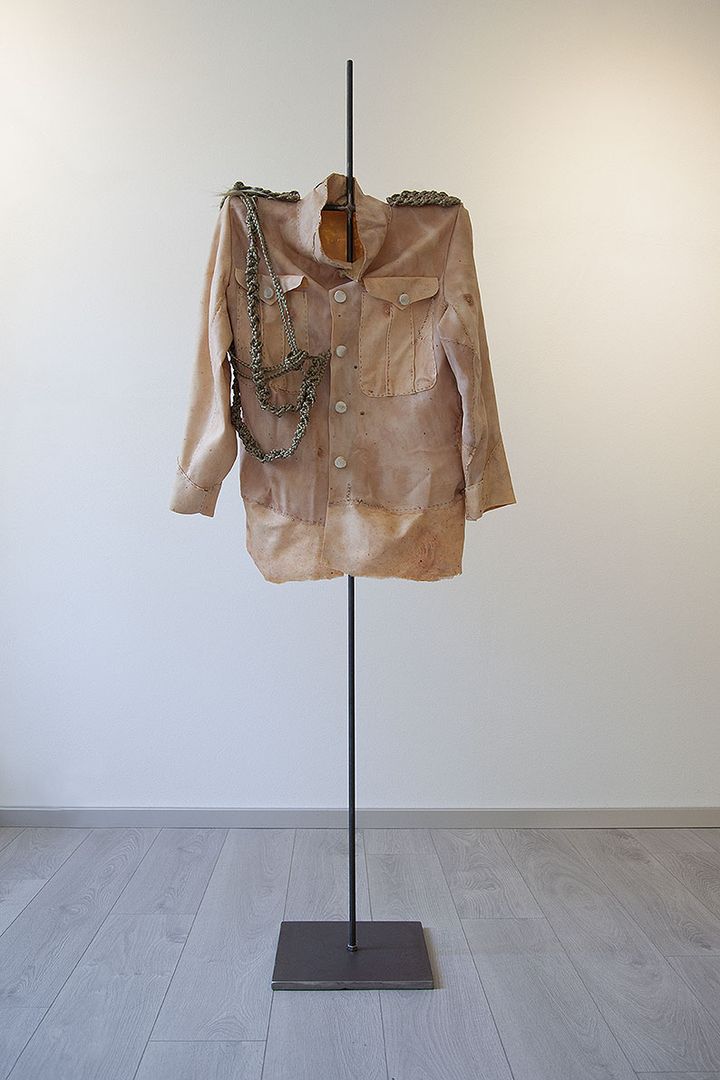
A uniform (from the French word “uniform” – uniform, the same) is the standard dress used by people belonging to an organized group. Same appearance allows an easy identification of its members. Actions taken by group members wearing a uniform are in accordance with the group mission.
In the case of a military uniform, which is dealt with in this project, there is respect on one side and authority on the other. People treat somebody in a uniform with respect and a uniformed person has authority. The uniformed people never act on their own behalf, he/she presents an authority and always observes the rules in a particular place. Unlike other symbols of authority – for example, a counter or a door at the doctor´s automatically place the knocking people into the subordinate position – the uniform is mobile. Wherever a uniformed person enters, the authority of a particular body enters too.
Lots of emotions are connected with a military uniform concerning the fear – safety scale. A uniform makes the soldier behave as a part of an army. There is an ethical outcome if the whole group acts ethically, and unethical outcome if there is an unethical approach of the whole group. While democratic systems limit the authority of an army by continuous regulations and civilian commands in times of peace, the dictatorial regimes are, on the contrary, founded on the basis of army supremacy over the law and even civil control. The army may be a victim, as well as a violator at the same time, talking about the fanatical civil regimes such as Nazi Germany. A victim of its own obedience to the law, and also an executor of cruel injustice, which is required by its civil control.
A uniform in such case allows a soldier to stop thinking as “I” and act as “WE” instead. Thus he can excuse the moral contradiction between what is he forced to do, and what his voice of conscience would say, if he had time to think over his actions. A uniform makes it possible for a human individuality to become a depersonalized part of authority. Such a “part” can then act differently within certain specified competences and duties, than it would be without a uniform. In extreme situations and under certain circumstances, the shield of a uniform, a sanctification of authority execution, may even lead to the application of a behavior, which otherwise would be in conflict with the law.
In the sixties and seventies, extensive practical experiments took place on this topic. Use of own authority over another person was examined in simulated conditions, under the command of a “higher authority” or within official competence of their own post (Milgram's Experiment in 1963 and Stanford Prison Experiment in 1971). It turned out that under conditions which do not make a person individually responsible for suffering, physical harm or even death of a study participant, people are often able to accomplish things that would be unacceptable for them in everyday life.
Under certain circumstances, society accepts actions (violent examinations, torture, killing, provoked wars or genocides) that would be otherwise contrary to the law. Such practices are sometimes even awarded by respect and prestige. They are appreciated by the rise of the social ladder, bonuses, military ranks and medal of honor. It is tolerated that uniforms are often stained with the blood of innocent people.
Uniforms are sewn from skin, hair and bones, in fact a kind of relic of their victims.
Uniform of the President and the Field Marshal Idi Amin Dada
About 300,000 people died a violent death in Uganda during his government in 1971-9.
Uniform of British Field Marshal Horatio Herbert Kitchener
The 1st concentration camp was erected at his suggestion. 38,000 Boers died there during the Boer War in 1900 - 1902.
Uniform modeled according to Obergruppenführer SS Reinhard Heydrich
ISIS Uniform




